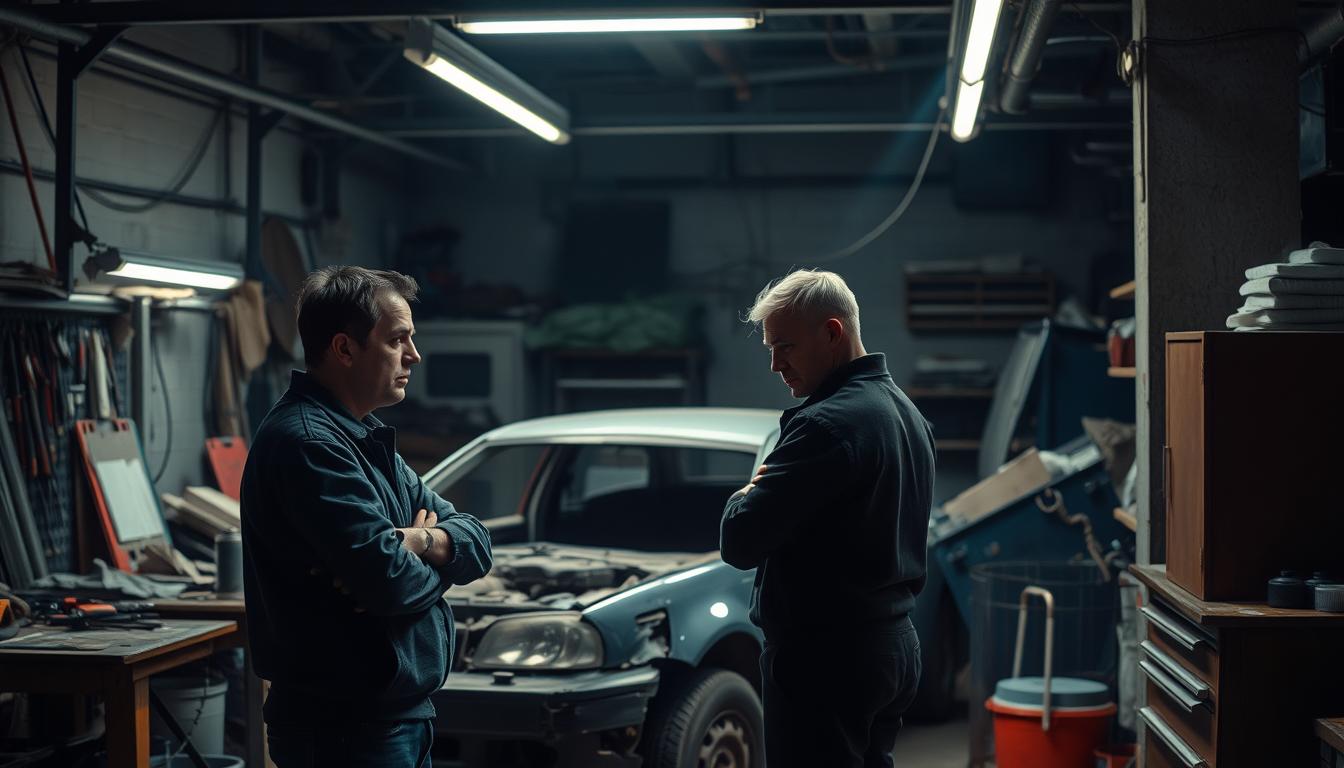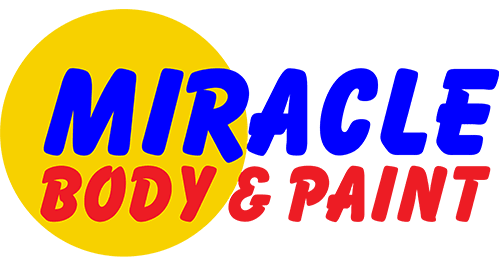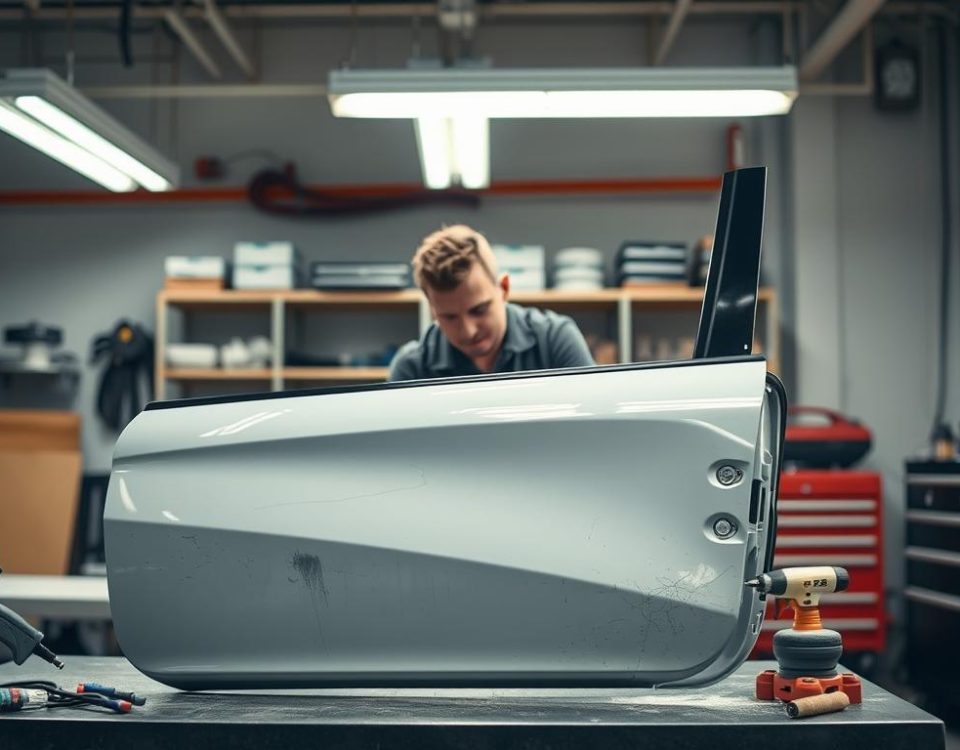
How Quality Auto Parts Impact Collision Repair

How to Spot Auto Body Repair Scams
Understanding the various auto frames is crucial for effective collision repair and ensuring vehicle safety.
There are several types of frames used in vehicles, including unibody, body-on-frame, space frame, ladder frame, and monocoque frames, each with its unique characteristics and repair requirements.
At Miracle Body and Paint, with two convenient locations in San Antonio, our experts are equipped to handle repairs for various frame types, ensuring your vehicle is restored to its optimal condition.
Key Takeaways
- Different types of auto frames require specific repair approaches.
- Unibody and body-on-frame are two common frame types.
- Understanding frame types is essential for effective collision repair.
- Miracle Body and Paint offers expert repair services for various frame types.
- Proper frame repair is critical for vehicle safety and performance.
Understanding Auto Body Frame Types
The auto body frame is a fundamental component of a vehicle, serving as the structural foundation that supports the vehicle’s body and protects its occupants. Understanding the different types of auto body frames is essential for appreciating vehicle design and repair needs.
What Is an Auto Body Frame?
An auto body frame is the underlying structure of a vehicle to which all other components, such as the engine, suspension, and body panels, are attached. It plays a critical role in maintaining the vehicle’s integrity and safety. The frame must be strong, durable, and capable of withstanding various stresses and strains.
Key characteristics of an auto body frame include:
- Structural integrity
- Durability
- Ability to absorb and distribute impact forces
Importance of Frame Types
The type of frame used in a vehicle significantly affects its safety, performance, and repair needs. Different frame types offer varying levels of strength, weight, and flexibility. For instance, some frames are designed to be more rigid to improve handling, while others are engineered to absorb impact better.
The main reasons understanding frame types is crucial include:
- Effective collision repair
- Accurate assessment of vehicle safety
- Optimization of vehicle performance
By understanding the different types of auto body frames and their characteristics, vehicle owners and repair professionals can make informed decisions regarding maintenance, repairs, and safety assessments.
Unibody Frames: The Modern Standard
Modern vehicles predominantly utilize unibody frames for their structural integrity. This design integrates the body and frame into a single unit, offering several advantages over traditional body-on-frame constructions.
Characteristics of Unibody Frames
Unibody frames are characterized by their monocoque design, where the vehicle’s body is welded together to form a single, rigid structure. This construction method provides improved strength and reduced weight, contributing to better fuel efficiency and handling.
The integrated design also allows for more precise control over the vehicle’s crashworthiness, enhancing safety in collision work. Furthermore, unibody frames enable more flexible design options, as the absence of a separate frame allows for more creative freedom in shaping the vehicle’s body.
Repair Challenges with Unibody Frames
Despite their advantages, unibody frames present unique challenges when it comes to repairs, particularly after a collision. The integrated structure means that damage to one area can potentially affect the entire vehicle’s integrity.
Technicians must employ specialized techniques and equipment to restore the vehicle’s original structure, which can be time-consuming and requires a high level of expertise in collision work. Additionally, the use of advanced materials in unibody constructions, such as high-strength steel and aluminum, demands specific repair methodologies.
- Specialized repair techniques are required.
- Advanced materials necessitate specific repair methodologies.
- Expertise in collision work is crucial.
Body-on-Frame Design: A Classic Approach
Body-on-frame design is a traditional method where the vehicle’s body is mounted on a separate frame, commonly used in trucks and SUVs.
This design approach has been favored for its strength and durability, making it ideal for vehicles that require heavy-duty performance. The separation of the body and frame allows for easier repairs and replacements, as damage to the body does not necessarily affect the frame, and vice versa.
Key Features of Body-on-Frame Vehicles
Body-on-frame vehicles are known for their robustness and are typically used in applications where strength is paramount. Some key features include:
- Separate Body and Frame: The body is mounted on a separate frame, allowing for greater flexibility in design and repair.
- Durability: The design is renowned for its durability and ability to withstand heavy loads and stresses.
- Heavy-Duty Applications: Commonly used in trucks and SUVs, where strength and towing capacity are crucial.
Common Repairs for Body-on-Frame Vehicles
Despite their durability, body-on-frame vehicles can suffer from various types of damage, necessitating specific repairs. Common issues include:
- Frame Damage: Cracks or bends in the frame can compromise the vehicle’s structural integrity.
- Body Mount Issues: Over time, the mounts that secure the body to the frame can wear out or become damaged.
- Rust and Corrosion: Exposure to the elements can lead to rust, particularly in regions with high salt usage on roads.
Repairing these issues often involves specialized techniques and equipment, highlighting the importance of professional repair services for body-on-frame vehicles.
Space Frame: Innovation in Engineering
The space frame design represents a significant innovation in automotive engineering, offering a unique blend of strength and lightweight construction. This design approach has been increasingly adopted in the automotive industry due to its potential to enhance vehicle performance and efficiency.
How Space Frame Designs Work
The space frame is a type of vehicle frame that uses a three-dimensional lattice structure to provide exceptional strength while minimizing weight. This is achieved by using a combination of materials, such as aluminum and steel, arranged in a geometric pattern to maximize structural integrity.
Space frames work by distributing the forces acting on the vehicle across the lattice structure, thereby enhancing the overall strength and stability of the vehicle. This is particularly beneficial in improving crashworthiness and reducing the risk of damage.

Repair Techniques for Space Frames
Repairing space frames requires specialized skills and techniques due to their complex structure. Technicians must be trained to handle the unique challenges posed by these frames, including the use of advanced materials and the need for precise welding and alignment.
Effective repair of space frames involves a thorough assessment of the damage, followed by the application of appropriate repair techniques. This may include the replacement of damaged sections, precise welding, and the use of specialized tools to restore the frame to its original specifications.
By understanding how space frames work and the techniques required for their repair, automotive professionals can better address the needs of vehicles incorporating this innovative design.
Ladder Frame: Strength and Versatility
In the automotive world, ladder frames stand out for their durability and adaptability. Ladder frames are a type of frame design that provides exceptional strength and versatility, making them a popular choice for various vehicle types.
Common Uses of Ladder Frames
Ladder frames are commonly used in heavy-duty vehicles, such as trucks and SUVs, where strength and durability are paramount. Their design allows for robust performance under heavy loads and harsh conditions. These frames are also utilized in vehicles that require a high level of towing capacity.
The versatility of ladder frames makes them suitable for a wide range of automotive applications, from commercial trucks to off-road vehicles. Their ability to withstand heavy stress and strain is a significant advantage in these contexts.
Repair Needs for Ladder Frame Vehicles
Vehicles with ladder frames have specific repair needs, particularly after being involved in a collision. The repair process for ladder frame vehicles requires careful assessment to ensure that the frame is properly aligned and repaired. This is crucial for maintaining the vehicle’s structural integrity and safety.
Common repairs for ladder frame vehicles include straightening or replacing damaged frame sections, as well as addressing any associated damage to the vehicle’s body and suspension. Given the importance of the frame in supporting the vehicle’s overall structure, collision work on ladder frame vehicles demands skilled technicians with experience in frame repair.
Monocoque Frames: The Lightweight Alternative
Monocoque construction has become increasingly popular in modern vehicles, providing a compelling combination of reduced weight and enhanced structural integrity. This design approach has been particularly favored in high-performance and sports cars, where every kilogram counts and the need for agility and responsiveness is paramount.
Benefits of Monocoque Construction
The monocoque frame offers several significant advantages. Its lightweight nature contributes to improved fuel efficiency and reduced emissions, making it an attractive option for environmentally conscious vehicle owners. Additionally, the monocoque design allows for enhanced torsional stiffness, which improves handling and stability, particularly at high speeds.
- Reduced vehicle weight
- Improved fuel efficiency
- Enhanced structural integrity
- Better handling and stability
Repair Specifics for Monocoque Frames
Despite its numerous benefits, repairing a monocoque frame can be challenging due to its integral design. Damage to the frame can compromise the structural integrity of the entire vehicle, necessitating precise and skilled repair techniques. Repairing monocoque frames often requires specialized tools and training, as the process involves understanding the complex stress points and load paths within the frame.
Comparing Frame Types: Strength vs. Weight
Understanding the differences in strength and weight among various auto body frame types is essential for effective collision work. Different frame types offer varying levels of strength and weight, which are critical factors in determining the durability and safety of vehicles during and after collision repair.
How Weight Affects Repair Durability
The weight of an auto body frame significantly influences its repair durability. Lighter frames, such as those found in unibody and monocoque constructions, can be more prone to damage but offer better fuel efficiency and handling. On the other hand, heavier frames, like ladder frames, provide more strength and durability but may compromise on fuel efficiency.
During collision repair, the weight of the frame affects the materials and techniques used. For instance, lighter frames may require more precise repair techniques to maintain their structural integrity, while heavier frames can withstand more robust repair methods.
Strength and Safety Considerations
The strength of an auto body frame is directly related to the safety of the vehicle’s occupants. Frames with higher strength-to-weight ratios, such as space frames, offer enhanced safety without significantly increasing the vehicle’s weight. In contrast, frames with lower strength-to-weight ratios may compromise on safety or weight.
When evaluating frame types, it’s crucial to consider both strength and weight. A balanced approach ensures that the vehicle is both safe and efficient. For example, monocoque frames achieve a balance between strength and weight, making them a popular choice for many modern vehicles.
- Unibody Frames: Offer a good balance between strength and weight but can be challenging to repair.
- Body-on-Frame: Provides strength and durability but can be heavier.
- Space Frames: Known for their high strength-to-weight ratio, ideal for high-performance vehicles.
- Ladder Frames: Strong and durable, often used in trucks and larger vehicles.
Frame Damage: Signs and Symptoms to Look For
Frame damage can manifest in various ways, and being aware of its indicators is vital for timely repairs. The frame is a critical component of a vehicle’s structure, providing the foundation upon which the body and other essential parts are mounted.
Visual Indicators of Frame Issues
Visual signs of frame damage include uneven or misaligned body panels, which can indicate that the frame has been compromised. Other visual cues are rust spots or corrosion, particularly in areas prone to moisture accumulation. Inspecting the vehicle’s underside for any signs of damage or rust is crucial.

Functional Symptoms of Damaged Frames
Besides visual signs, there are functional symptoms that may indicate frame damage. These include unusual noises while driving, such as clunking or creaking sounds, and uneven tire wear, which can result from misaligned wheels due to frame distortion. Additionally, if the vehicle pulls to one side while driving on a straight road, it could be a sign of frame damage affecting the vehicle’s alignment.
Recognizing these signs early on is crucial for preventing further damage and ensuring the vehicle’s safety and performance. Prompt frame repair can help restore the vehicle’s integrity and prevent more costly repairs down the line.
Collision Repair Techniques by Frame Type
Understanding the specific collision repair techniques for different auto frames is essential for effective restoration. Different frame types require specialized collision repair techniques, and using the correct methods is crucial for ensuring safe and durable repairs.
Unique Challenges for Different Frames
Each type of auto frame presents its own set of challenges when it comes to collision repair. For instance, unibody frames require precise techniques to restore their structural integrity, as they are designed to absorb and distribute the forces of an impact.
In contrast, body-on-frame vehicles often involve more straightforward repair processes, but the frame itself may require specialized welding and alignment techniques.
Standard Repair Procedures
Despite the differences in frame types, there are standard repair procedures that apply across the board. These include:
- Assessing the damage to determine the most appropriate repair technique
- Using high-quality materials and equipment to ensure durability
- Following manufacturer guidelines for specific repair procedures
By combining these standard procedures with the unique techniques required for each frame type, collision repair professionals can ensure that vehicles are restored to their pre-accident condition.
The Importance of Professional Repair Services
Professional repair services play a crucial role in ensuring the safety and durability of your vehicle’s frame after a collision. When your vehicle’s frame is damaged, it’s not just a matter of aesthetics; the structural integrity of the vehicle is at stake. Thus, having the right professionals handle the repairs is essential.
Why Hire Experts for Frame Repair?
Expertise in frame repair is not just about fixing the visible damage; it’s about ensuring that the vehicle’s frame is restored to its original specifications. Professional technicians have the training and equipment to handle complex repairs, including those that involve advanced materials and sophisticated frame designs.
Moreover, professionals can identify potential issues that might not be immediately apparent, such as hidden damage that could lead to safety problems down the road. By hiring experts, you can be confident that your vehicle is safe to drive and that the repairs will last.
Miracle Body and Paint’s Expertise
At Miracle Body and Paint, we pride ourselves on our expertise in frame repair and collision work. With two convenient locations in San Antonio, we’re well-equipped to serve the community with top-notch repair services. Our team is dedicated to providing high-quality repairs that meet or exceed industry standards.
Our state-of-the-art equipment and trained technicians enable us to tackle even the most challenging frame repairs with precision and care. Whether it’s a unibody frame, a body-on-frame design, or any other type, we’ve got the expertise to get the job done right.
Choosing the Right Auto Body Shop
Finding a trustworthy auto body shop is essential for effective frame repair and overall vehicle safety. With the complexity of modern auto body frame types, it’s crucial to choose a shop that has the expertise and equipment to handle your vehicle’s specific needs.
What to Look for in a Repair Shop
When selecting an auto body shop, there are several factors to consider. First, look for a shop with experience in handling your vehicle’s auto body frame type. Different frames, such as unibody, body-on-frame, or space frames, require unique repair techniques.
- Certifications and qualifications of the technicians
- Quality of materials and equipment used
- Customer reviews and reputation
- Warranty offered on repairs
Additionally, a reputable shop should provide a detailed estimate and explanation of the necessary frame repair work. They should also be transparent about their process and keep you informed throughout the repair.
Miracle Body and Paint’s Commitment to Quality
At Miracle Body and Paint, we understand the importance of high-quality frame repair and collision services. With two convenient locations in San Antonio, we are dedicated to providing top-notch repairs and exceptional customer service. Our team of experts is trained to handle a variety of auto body frame types, ensuring that your vehicle is restored to its original condition.
We take pride in our commitment to quality, using the latest equipment and techniques to guarantee durable and safe repairs. Our goal is to get you back on the road quickly and safely, with a repair that meets or exceeds your expectations.
Trust Miracle Body and Paint for all your auto body repair needs.
Get Your Vehicle Back on the Road
Understanding the repair process is crucial for getting your vehicle back on the road safely and efficiently. When it comes to collision work, the integrity of your vehicle’s auto frames is paramount.
The Repair Journey
At Miracle Body and Paint, experts guide you through every step of the repair process, ensuring that your vehicle’s auto frames are restored to their original condition. With state-of-the-art facilities and a commitment to quality, you can trust that your vehicle is in good hands.
If you’re dealing with collision damage, don’t hesitate to reach out to Miracle Body and Paint. With two convenient locations in San Antonio, they are well-equipped to handle all your auto frame repair needs, getting you back on the road in no time.



